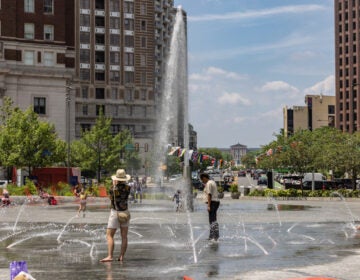N.W. Philly residents react to proposed zoning code
Residents of Manayunk, East Falls and Roxborough are generally optimistic about zoning code reform, but folks PlanPhilly talked to believe special attention ought to be paid to the peculiar nature of the Northwest.
“We’re in support of the rewrite, because we feel like the way the code is currently written, people have to get variances for practically everything,” says Gina Snyder, executive director of the East Falls Development Corporation. “And that really slows down and discourages business.”
For instance, Snyder recalls that an upscale hot dog eatery was going to open near Fork & Barrel on Ridge Avenue a few years ago, but the “approval process was so difficult” that the business owner bowed out. She’s confident the new code will simplify these procedures and require fewer hearings before the Zoning Board of Adjustment.
Two of the Zoning Code Commission’s priorities are to create a code that’s less of an impediment to developers and property owners, and make the approval process more predictable.
Meg Greenfield, vice president of the East Falls Community Council, and Bob Turino, president of the Upper Roxborough Civic Association, are both fearful that these changes will be more beneficial to developers than residents.
“The code is weighted toward the builder,” says Turino, noting that this is especially unfavorable in the suburban-like community of Upper Roxborough.
Greenfield believes that to balance the scales, the Civic Design Review Committee — a group of architects, planners, designers and a community member that will provide a non-binding recommendation to developers about large-scale and significant projects — ought to abide by different rules in East Falls than, say, Center City.
“We want more triggers for the design review to be geared toward small-scale districts like East Falls, because now 99 times out of 100 projects in the area are not going to be big enough to trigger the Committee,” says Greenfield. “Yet they’ll still have as much of an impact as a big project downtown, because the scale is different.”
Under the proposed code, the Committee will be called upon to review buildings with more than 100,000 new square feet or 100 residences, unless it’s an industrial building in an industrial district. Also, the Committee will review new buildings that have more than 50,000 new square feet or 50 residences that are in a commercial, industrial or a special-purpose district and next to a multi-family or mixed-use residential district, or are 20 feet taller than the tallest allowed building in those adjacent residential districts. The committee will also have a say about all buildings with more than 25,000 new square feet or 25 residencies that are on a lot next to a single-family detached or single-family attached residential district, or are 20 feet taller than the tallest allowed building in those adjacent single-family districts.
(Check out PlanPhilly’s article on Civic Design Review and the zoning code draft for a more detailed explanation of the Committee.)
Another source of minor controversy in the Northwest is the new draft’s take on some overlays.
In the current code, the East Falls overlay stipulates that, among other things, restaurants must vent their cooking and exhaust fumes through the roof, and adhere to certain trash-storage requirements; the proposed East Falls commercial area overlay does not.
“They should stick with the controls that are in the original overlay,” says Greenfield. “They took years of working with the Planning Commission, and to throw them all out without a similar process doesn’t make much sense. They’re trying for a one-size-fits-all approach that doesn’t work for us.”
Snyder is not quite as concerned because, she notes, “When I talked to the Commission, they said that the trash-storage requirements would actually be in the code because they’d be covered under health and safety. So we’re looking to see if that’s the case, and if they are, then that’s cool. We’re a little unclear.”
Jane Lipton, executive director of the Manayunk Development Corporation, is fine with the changes to the overlay that governs Lower Venice Island and the neighborhood’s Main Street. In the proposed overlay, there are fewer restrictions on what types of businesses can operate on Main Street.
“Overall, the new overlays will result in no major changes for us,” she says. “I see the draft as incorporating all of the many overlays into one single document that is a little more streamlined.”
And that, says Lipton, is the point of this whole reform.
“We think the rewrite is a great process. It’s going to really simplify the code.”
Philadelphia’s Zoning Code Commission is currently finalizing a new draft of the city’s zoning code, which will go to City Council next year. This article is part of a short series from PlanPhilly, which analyzes how the new code affects neighborhoods in the Northwest, and finds out what residents think about the changes.
WHYY is your source for fact-based, in-depth journalism and information. As a nonprofit organization, we rely on financial support from readers like you. Please give today.




